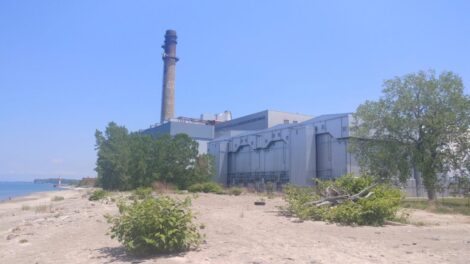It’s never simple arithmetic with schools

OBSERVER Photo
Ripley Superintendent William Caldwell found a lot more than just a lucky penny. When the district he oversees was closing the books on the 2018-19 school year last month, staff members discovered an additional $70,000 in its coffers, courtesy of New York state aid.
What did the district do with the windfall? About $25,000 went toward the tax levy this year, which wiped out a planned increase to district residents for the coming year.
“The board felt it wasn’t right to ask for a tax increase when we had the funds here,” Caldwell said in last week’s Westfield Republican.
Ripley, which has a tuitioning agreement for the seventh- to 12th grade students with Chautauqua Lake, has the smallest enrollment of all districts covered in the OBSERVER circulation area. According to the most recent New York state Education Department report card, only 124 pupils attend kindergarten to sixth grade.
By slashing the superintendent or principal position in the district, Ripley would not have had to rely on the recently discovered state aid to fill the gap for its already overburdened taxpayers. It would have already saved about $85,000 in salary.
On numbers alone, the Ripley district is the most costliest to maintain in terms of effectiveness. This fact is nothing new. Even when Ripley had a whopping enrollment of 350 students, its cost per student was the highest — often reaching $30,000.
Many in Chautauqua County justifiably complain about the politics of New York state. They are not fans of the SAFE Act, which they believe infringes on their Second Amendment rights, and do not appreciate the left-leaning ways of Albany and downstate.
But this county, which is often critical of the state’s welfare system, always has its hands out when it comes to funding education. Ripley is a perfect example.
There, the district that runs on a budget of $9 million receives about 75 percent of its operating aid from Albany. There is no way its residents there could afford having a school by paying for it on their own.
Earlier this week, the Empire Center did its own report on the plummeting numbers when it comes to students. Overall, the 2019-20 enrollment is at its lowest levels in New York state in the last 30 years.
“The more than 10 percent decrease in New York school enrollment since the turn of the century contrasts with a national enrollment increase of 7 percent during the same period,” the report noted.
And while class sizes are down with one exception locally, most payrolls in area districts are up — compared to the 2012-13 school year. Here is a breakdown, by area district, of payroll in 2012-13 and today, current enrollment, payroll cost per student and the enrollment change over the last 10 years:
• Brocton, $4.8 million in 2012-13, $5.7 million today; 501; $11,400; down 19%.
• Cassadaga Valley, $9.5 million then, $9.8 million today; 809; $12,113; down 30%.
• Chautauqua Lake, $9 million then, $8.9 million today; 769; $11,573; down 13%
• Dunkirk, $19.8 million then, $21.8 million today; 2,020; $10,792; up 8%.
• Forestville, $4.9 million then, $5.3 million today; 440; $12,045; down 25%.
• Fredonia, $12.6 million then, $14.9 million today; 1,479; $10,074; down 12%.
• Gowanda, $12.6 million then, $14.8 million today; 1,164; $12,714; down 20%.
• Pine Valley, $6.6 million then, $5.8 million today; 507; $10,433; down 25%.
• Ripley, $3.3 million then, $2.1 million today; 124; $16,935; down 57%.
• Silver Creek, $9.2 million then, $11.3 million today; 1,008; $11,210; down 6%.
• Westfield, $7.3 million then, $8.2 million today; 653; $12,557; down 18%.
For the most part, the figures show what you would expect. The largest losses in enrollment is in the smallest districts while payroll costs, with two exceptions, continue to grow.
What the community and New York state needs to understand, especially moving forward, are the double-edged sword of building projects. While they provide an excellent bang for the buck with maintenance — the state kicks in more than 90 percent of the cost at times — our area does not need to continue to build larger schools, especially for those under 800 in enrollment.
Those massive projects often hinder talk of consolidation with neighboring districts, which makes a lot of sense until somebody’s feelings get hurt.
But, as noted earlier, Western New Yorkers love free money from Albany. Never mind how much it will ultimately cost us by running small school districts in the long run.
John D’Agostino is the OBSERVER publisher. Send comments to jdagostino@observertoday.com or call 366-3000, ext. 401.




